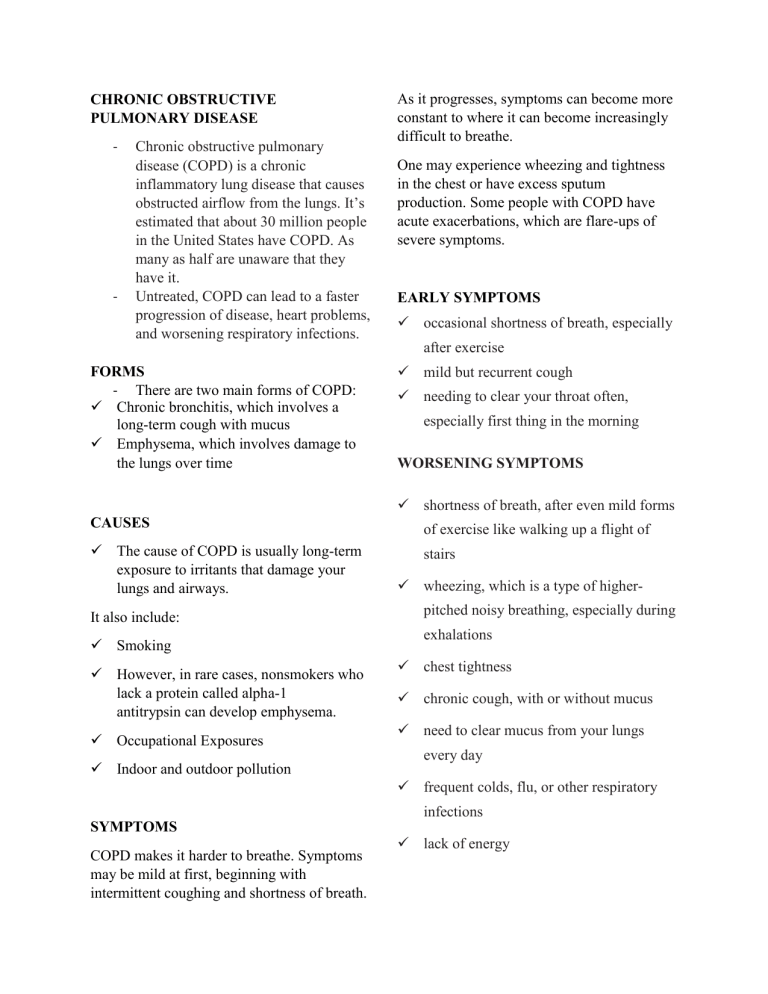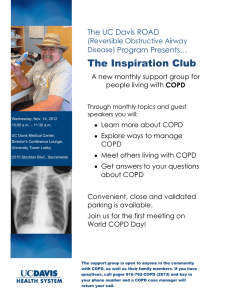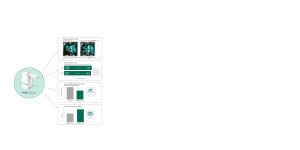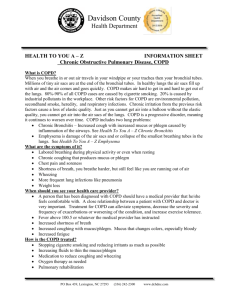
CHRONIC OBSTRUCTIVE PULMONARY DISEASE - - Chronic obstructive pulmonary disease (COPD) is a chronic inflammatory lung disease that causes obstructed airflow from the lungs. It’s estimated that about 30 million people in the United States have COPD. As many as half are unaware that they have it. Untreated, COPD can lead to a faster progression of disease, heart problems, and worsening respiratory infections. FORMS - There are two main forms of COPD: Chronic bronchitis, which involves a long-term cough with mucus Emphysema, which involves damage to the lungs over time As it progresses, symptoms can become more constant to where it can become increasingly difficult to breathe. One may experience wheezing and tightness in the chest or have excess sputum production. Some people with COPD have acute exacerbations, which are flare-ups of severe symptoms. EARLY SYMPTOMS occasional shortness of breath, especially after exercise mild but recurrent cough needing to clear your throat often, especially first thing in the morning WORSENING SYMPTOMS shortness of breath, after even mild forms CAUSES of exercise like walking up a flight of The cause of COPD is usually long-term exposure to irritants that damage your lungs and airways. stairs It also include: Smoking However, in rare cases, nonsmokers who lack a protein called alpha-1 antitrypsin can develop emphysema. Occupational Exposures Indoor and outdoor pollution wheezing, which is a type of higherpitched noisy breathing, especially during exhalations chest tightness chronic cough, with or without mucus need to clear mucus from your lungs every day frequent colds, flu, or other respiratory infections SYMPTOMS COPD makes it harder to breathe. Symptoms may be mild at first, beginning with intermittent coughing and shortness of breath. lack of energy In later stages of COPD, symptoms may also include: MEDICAL TREATMENT Bronchodilators Corticosteroids fatigue Combination inhalers swelling of the feet, ankles, or legs Antibiotics weight loss Roflumilast (Daliresp) Flu or pneumonia vaccines RISK FACTORS Pulmonary rehabilitation Smoking. This the main risk factor. Up to 75 percent of people who have COPD smoke or used to smoke. Oxygen therapy Long-term exposure to other lung irritants, such as secondhand smoke, air pollution, and chemical fumes and dusts from the environment or workplace Age. Most people who have COPD are at least 40 years old when their symptoms begin. Genetics. This includes alpha-1 antitrypsin deficiency, which is a genetic condition. Also, smokers who get COPD are more likely to get it if they have a family history of COPD. COMPLICATIONS Respiratory infections Heart problems Lung cancer High blood pressure in lung arteries Depression In severe cases of COPD, the doctor may suggest: Bullectomy Lung volume reduction surgery Lung transplant






